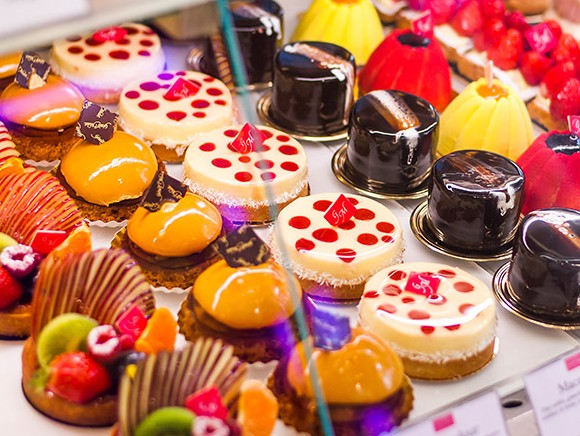
Do you have passion for your products and for your store? Do you know where your power lies, and do you acknowledge your weaknesses? Do you dare to change, do you want to keep learning? Are your products good and different? That’s when you have the future in your hands!
The turnover in many fresh food stores is under pressure. Especially the middle segment has trouble, because consumers are opting for the extremes: for cheap or premium. Where lie the opportunities and what are the threats for store managers? Food Service Institute Netherlands (FSIN) released a foresight for the fresh food store for its members, based on current facts and thorough analysis. Food researcher Jan Willem Grievink, CEO of FSIN, tells about it.
There are quite a few trends in society that affect the entrepreneurship of the fresh food sector. Jan Willem Grievink mentions a few: “everyone is almost 24/7 online; for social contact, entertainment and gathering information, and increasingly also for buying and selling goods and services. As fresh food store you have to be online.
Supermarkets change. They offer consumers ever more convenience and experience, change it to fresh theatres and move it closer to the fresh food store. The fresh food store has to make sure to do it better and different. The family business has the wind in its sails. Small scale, local handicraft and they are well appreciated.
Seniors are an important part of the clientele of fresh food stores, and the ageing of the population continues. With a surprising, distinctive and healthy range focused on convenience, with extra (online) services and activities, such as cooking together, presentations, visiting vendors, you play in on the specific needs of this target group.
The demand for transparency means not only more information about your products, but it also affects the layout of your business: the counter as separation between you and the client might be disappearing. Give the customer a look in your kitchen or workshop, or place a camera on a farm where your products come from and make a short clip.
FSIN predicts that discount and convenience stores and premium concepts will most likely grow online, and that the middle of the market will lose terrain. “Make no mistake”, says Grievink, “for the ‘middle of the road’ stores will always absolutely still be a market, only this market will become smaller. Those who are on the same price level as a supermarket, must be very smart entrepreneurs to earn sufficient turnover and profit. Be the best in your segment. Do you offer convenience, do it well. For example; open earlier than the supermarket, or keep your store open after supermarket hours. When you focus on ‘to-go’, then there will be no wait times”.
Grievink can’t stop talking about how fresh food stores could be distinguished from the supermarket. “The store needs to be much more a really special thing. Food is an integral part of the lifestyle of consumers. Sell more than just products. Also, be a mentor for your customers, for example; give workshops for hobby cooks. Make a connection with your customers. This approach asks for passionate and skilled entrepreneurs.”
“The fresh food store owner should be proud as a peacock on everything he does and makes. The whole village should know you and be proud of you. The pastries in the Town Hall must therefore be yours. Do they present frozen cake, then you talk to them and advise them your goods. What the customer gets in your store is extremely tasty. With that message you speak to the public.” You don’t have to fear somewhat higher prices according to Grievink: research shows that expensive products aren’t necessarily sold less often. Certainly not when a business owner can tell the story behind it and if the products and packaging are really distinctive. “Constantly refresh, win races and be proud of what you do; that has a huge appeal to the consumer”, Grievink says.
Only knowing what you’re good at is not enough. “You have to be prepared to change and learn”, according to Grievink. “Also recognise where you’re not good at. Do you have little affinity with online? Look closely at the core strengths of your staff. Maybe one of them does have talent for online. You can’t do it alone, dare to hire people that can do those things better then you. For example; hire a cook for making good meals. Work together with other entrepreneurs, restaurants or lunchrooms. They can tell where those tasty pastries come form, or tell about the origin of the meat and which fresh food store delivered it, make an alliance with the supermarket. In short: bundle the forces. To win over the customer, you have to really work on employee satisfaction. If they love to work in your shop, the customer satisfaction raises as well.”

Customer satisfaction is closely linked to blurring; blurring the boundaries between the different retail channels and catering. Grievink: “It’s actually nothing different than ‘putting your customer first’. The customer doesn’t at all think in ‘channels’. The customer just wants to be able to buy a sandwich at his butcher and eat, or buy a meat stew at its grocer, and if possible, preferably with a matching wine. Breakfast, lunch, dinner, snacks; be there for the customer at any time of day. Real entrepreneurs follow their customer everywhere and do all of this for granted. Passion, craft, pride, and especially creative entrepreneurship, that are determining factors for the store of the future.”
Source: Foto Grievink: ©Leo de Jong, foto gebakjes;: ©Ivlianna/Shutterstock.com